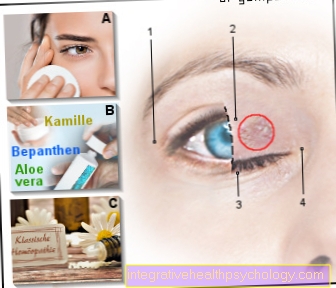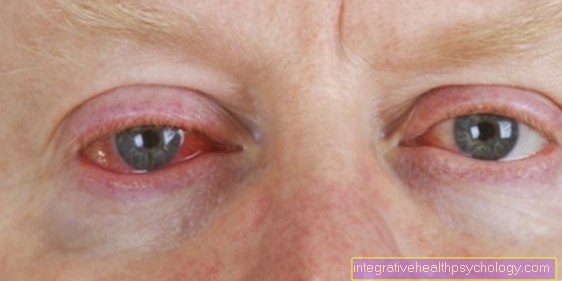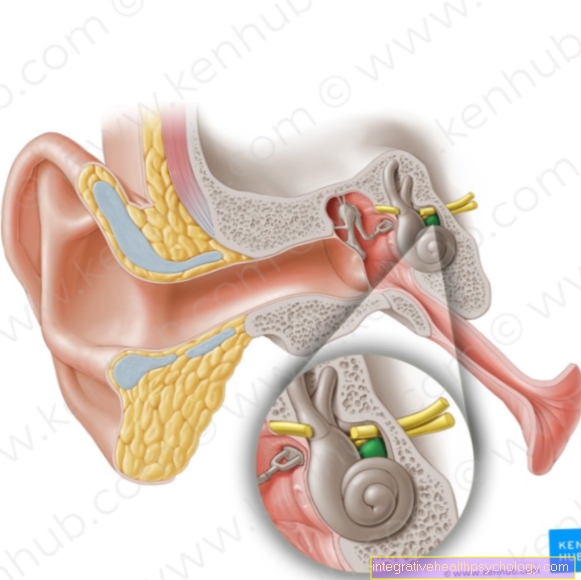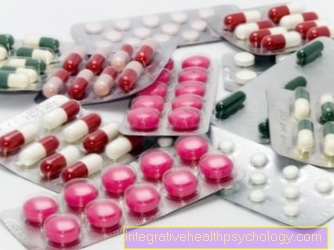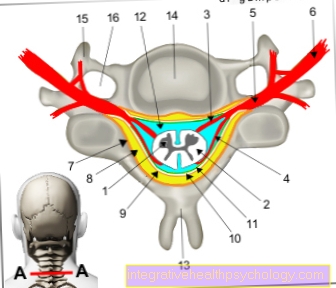Antifungal drugs
Synonyms
Mycostatics, antifungal agents
introduction

Antimycotics are a group of drugs that counteract human pathogens Fungi, that is fungi that attack humans, and Mycoses (Fungal disease) has an effect. The effect of antimycotics is based on the fact that they act against or on fungal-specific structures. Since the fungal cells have a similar structure to human cells in some places, there are a manageable number of points of attack for antimycotics. These points of attack are usually located in the cell membrane of the fungi. Depending on what kind of fungus is causing the mycosis, other antifungal agents are used. Not every antifungal agent works on every fungus, because, as with bacteria, there is natural resistance.
Please also read our article on this Mushrooms.
Classification of antifungal agents
The Antifungal drugs can be classified according to their mode of action. For one thing, they can fungicide be - the fungal cells are killed by the respective antifungal agent, or they are fungostatic. This means that the fungal cells can no longer grow and multiply in the organism of the infected person. A further classification can be made according to the type of application: local (the antimycotic only works on the treated area, e.g. the skin) or systemic Application (the antimycotic acts in the whole organism).
Active substances and modes of action
They are a large group Azoles. They are in the subgroup of Triazoles and Imidazoles assigned. The classification depends on how many nitrogen atoms are in the heterocyclic ring. This heterocyclic ring is a chemical structure found in all azoles. While a triazole has three nitrogen atoms, an imidazole has only two in this ring.
The effect of the azoles is based on the disruption of the Ergosterol synthesis. The ergosterol is similar to that Cholesterol in humans. It is a sterol (membrane lipid) which is essential for the formation of the cell membrane in fungi. The azoles inhibit a certain enzyme (14? -Sterol-demethylase), which has a central role in the formation of ergosterol. The lack of formation of ergosterol consequently creates a deficiency. This leads to membrane damage on the fungal cells. As a result, the fungal cells do not die immediately, but they can no longer multiply and grow - Azoles are fungostatic. Depending on the proven fungal infection and the location of the infection, different azoles can be used. For example, care must be taken to ensure that the Fluconazol has no effect on Aspergillus and certain Candida strains.
Another group of active ingredients are the polyene macrolides. These include nystatin, Natamycin and Amphotericin B. Amphotericin B binds to ergosterol and is also stored in the cell membrane. This becomes more permeable for components from the fungal cell - the membrane no longer functions efficiently. As an effect of this, the fungal cell dies (fungicide). Amphotericin B has acute and chronic side effects that limit therapy in some places. Today a modified preparation is available - the liposomal amphotericin B. This has fewer side effects, but also costs considerably more money.
Another group are the echinocandins (Caspofungin, micafungin). These act by inhibiting glucan synthesis (a glucose chain specific to the fungus). The glucan is relevant for the stability of the cell wall. By inhibiting its synthesis, the cell wall loses the stability otherwise generated by glucan. The echinocandins are fungicidal or fungostatic, depending on the fungus they act on.
The group of pyrimidine derivatives (Flucytosine) to disposal. The flucytosine is absorbed by fungal cells and enzymatically converted into 5-fluorourcail. Its effect is based on the inhibition of protein and DNA synthesis. This inhibition breaks down the metabolism of the fungal cell - the pyrimidine derivatives are fungicidal and fungostatic.

